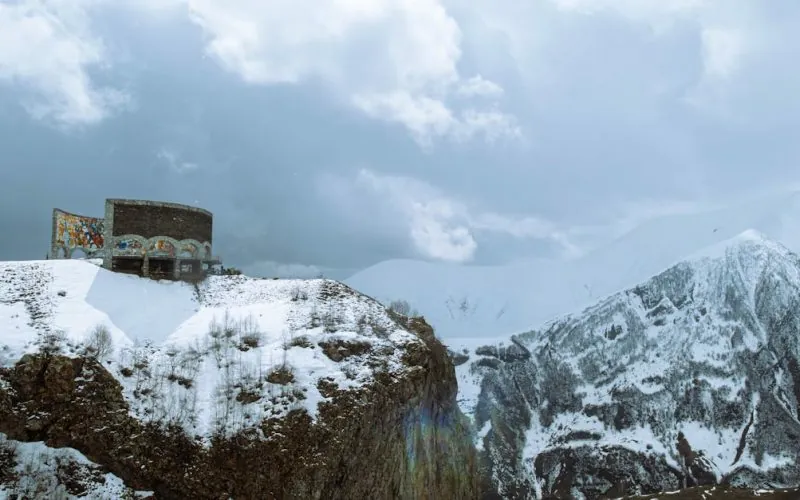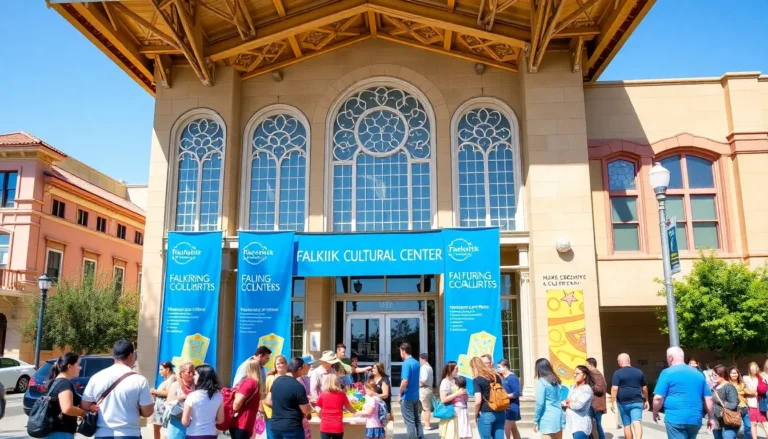Table of Contents
ToggleCultural geography is like the GPS of human experience, mapping out how culture shapes our world and how our world influences culture. Imagine a vibrant tapestry woven from the threads of language, religion, and traditions, all stitched together by the unique landscapes where people live. This fascinating field dives deep into the quirks and nuances that make each community distinct, proving that geography isn’t just about mountains and rivers—it’s about the people who inhabit them.
Ever wondered why your neighbor celebrates a different holiday or speaks a different language? Cultural geography has the answers. It uncovers the intricate relationships between people and their environments, revealing how culture and geography dance together in a never-ending tango. So buckle up as we explore the definition of cultural geography and uncover the rich layers of human life that make our planet a colorful mosaic.
Cultural Geography Definition
Cultural geography studies the relationship between culture and spatial environments. It explores how cultural practices shape and are shaped by geographic settings. Language, customs, and beliefs serve as critical components in this examination. Communities create unique identities based on their cultural expressions and the natural landscapes they inhabit.
Cultural landscapes reflect the values and traditions of societies worldwide. They include iconic structures, distinct agricultural practices, and diverse urban environments. Each landscape carries a story that reveals how human interactions with geographic elements influence culture.
Cultural geography also investigates globalization effects. As cultures intermix, unique practices evolve, leading to hybrid cultures that blend different traditions. This ongoing process highlights the dynamism of cultural geography.
Researchers often utilize qualitative methods, such as interviews and case studies. They analyze how individuals perceive their cultural landscapes and make meaning of their environments. Additionally, quantitative methods, including surveys and spatial analysis, provide insights into cultural patterns and distributions.
Through these approaches, cultural geography reveals the complexity of human relationships with space. It emphasizes that geography is not just about physical terrains; it encompasses the intricate web of human experiences, identities, and practices. Understanding cultural geography fosters a deeper appreciation for the diverse ways people connect with their surroundings.
Key Concepts in Cultural Geography
Cultural geography encompasses several essential concepts that illuminate the relationship between culture and geographic settings. Understanding these concepts enhances insights into how communities interact with their environments.
Space and Place
Space refers to a physical area with defined boundaries while place embodies the meanings attached to those spaces. Geographers analyze how cultural practices influence the perception of both space and place. Distinct cultural practices create unique spaces that reflect community values. People often form emotional connections to particular places, shaped by their experiences and heritage. Through these connections, individuals develop a sense of belonging, grounding their identities in specific geographic contexts.
Cultural Landscapes
Cultural landscapes represent the tangible expressions of human culture within specific environments. They consist of structures, agricultural patterns, and urban layouts that display the history and traditions of communities. Researchers assess these landscapes to understand how cultural values manifest geographically. For example, traditional farms illustrate agricultural practices adapted to their environment. Iconic monuments also serve as reminders of historical significance. Each cultural landscape carries unique stories and meanings, showcasing the interplay between human activity and geographic space.
Historical Development of Cultural Geography
Cultural geography has evolved through various influential ideas and the contributions of notable scholars. Understanding this evolution reveals the field’s complexity and richness.
Influential Theories
Cultural ecology explores the mutual influences between society and its environment. This theory emphasizes how cultural practices adapt to geographical conditions. Another significant perspective is humanistic geography, which focuses on individual experiences and meanings attached to places. This approach values subjective interpretations of space. Additionally, post-structuralist theories challenge established narratives, encouraging interpretations based on power dynamics and social inequalities. Each theory contributes to a more nuanced understanding of culture’s role in shaping landscapes.
Major Scholars
Carl Sauer significantly impacted cultural geography with his emphasis on cultural landscapes. His research highlighted how human activities transform natural environments. Yi-Fu Tuan further advanced the field by introducing notions of space and place. His work emphasized the emotional aspects of geographic locations. Edward Soja brought attention to the spatial dimensions of social relations, advocating for the importance of context. These scholars shaped the foundation of cultural geography, influencing contemporary research and analysis. Their legacies continue to inspire new generations of geographers.
Components of Cultural Geography
Cultural geography encompasses various elements that shape communities and their identities. Language and communication serve as vital components, reflecting shared values and facilitating connections among people.
Language and Communication
Language influences how communities express themselves and interact with their surroundings. It embodies cultural nuances, fostering relationships and understanding within societies. Different dialects arise, unique vocabulary and expressions develop, showcasing cultural diversity. This diversity manifests in written and spoken forms, enabling communities to convey traditions, ideas, and histories. Effective communication allows for the exchange of knowledge and practices, linking individuals to their cultural roots. Language also contributes to the development of social norms, establishing group identity through shared understanding. Through linguistic expressions, cultural geography reveals the essential role of language in shaping human experiences in various geographic contexts.
Religion and Spirituality
Religion acts as a crucial element in the study of cultural geography, influencing cultural practices and social structures. Spiritual beliefs help establish values and norms, guiding behavior within communities. Various faiths contribute distinct rituals, ceremonies, and holidays, enriching cultural landscapes and creating unique environments. The architecture of places of worship, such as temples, churches, and mosques, reflects community identities and historical influences. Religious practices also connect individuals to specific places, enhancing a sense of belonging and rootedness. Moreover, the interplay between religion and geography unfolds, as natural landscapes are often imbued with spiritual significance. Understanding the role of religion and spirituality provides insight into the cultural complexities that shape human interactions with geographic spaces.
Applications of Cultural Geography
Cultural geography finds applications across various fields, influencing urban planning, policy-making, and tourism. Urban planners utilize insights from cultural geography to design spaces that reflect community values and heritage. Policymakers often incorporate cultural considerations into development projects, ensuring that local identities remain intact.
In education, cultural geography serves as a vital tool for teaching social studies and environmental science. It helps students understand the interplay between culture and geography, fostering greater awareness of global diversity. Museums and cultural institutions use cultural geography to create exhibits that address historical and contemporary issues, strengthening community engagement.
Tourism also benefits significantly from cultural geography. Destination marketers highlight unique cultural landscapes, drawing visitors interested in authentic experiences. Community-based tourism initiatives leverage cultural heritage to promote local economies while preserving traditions.
Environmental conservation efforts increasingly integrate cultural geography. Through understanding the cultural significance of specific landscapes, conservationists can advocate for preservation that resonates with local populations. Collaborations between environmentalists and cultural geographers ensure that the preservation of natural spaces aligns with the cultural values of communities.
Health disparities can be analyzed through a cultural geography lens as well. Researchers investigate how cultural practices shape health behaviors and access to healthcare resources. By understanding these relationships, public health initiatives can address specific community needs more effectively.
Lastly, cultural geography plays an essential role in conflict resolution and peace-building efforts. Understanding cultural identities and spatial dynamics helps facilitate dialogue between groups, paving the way for mutual respect and cooperation. Engaging with community narratives and histories fosters reconciliation in areas affected by conflict.
Cultural geography serves as a vital lens through which to understand the intricate relationship between culture and the environment. By examining how cultural practices shape identities and landscapes, it reveals the stories embedded in human interactions with space. This dynamic field not only enhances awareness of global diversity but also informs various practical applications across disciplines. As communities continue to evolve in response to globalization and local influences, cultural geography remains essential for fostering appreciation and respect for the rich tapestry of human experiences. Through its exploration of space, place, and cultural landscapes, it underscores the importance of understanding the diverse ways people connect with their surroundings.





